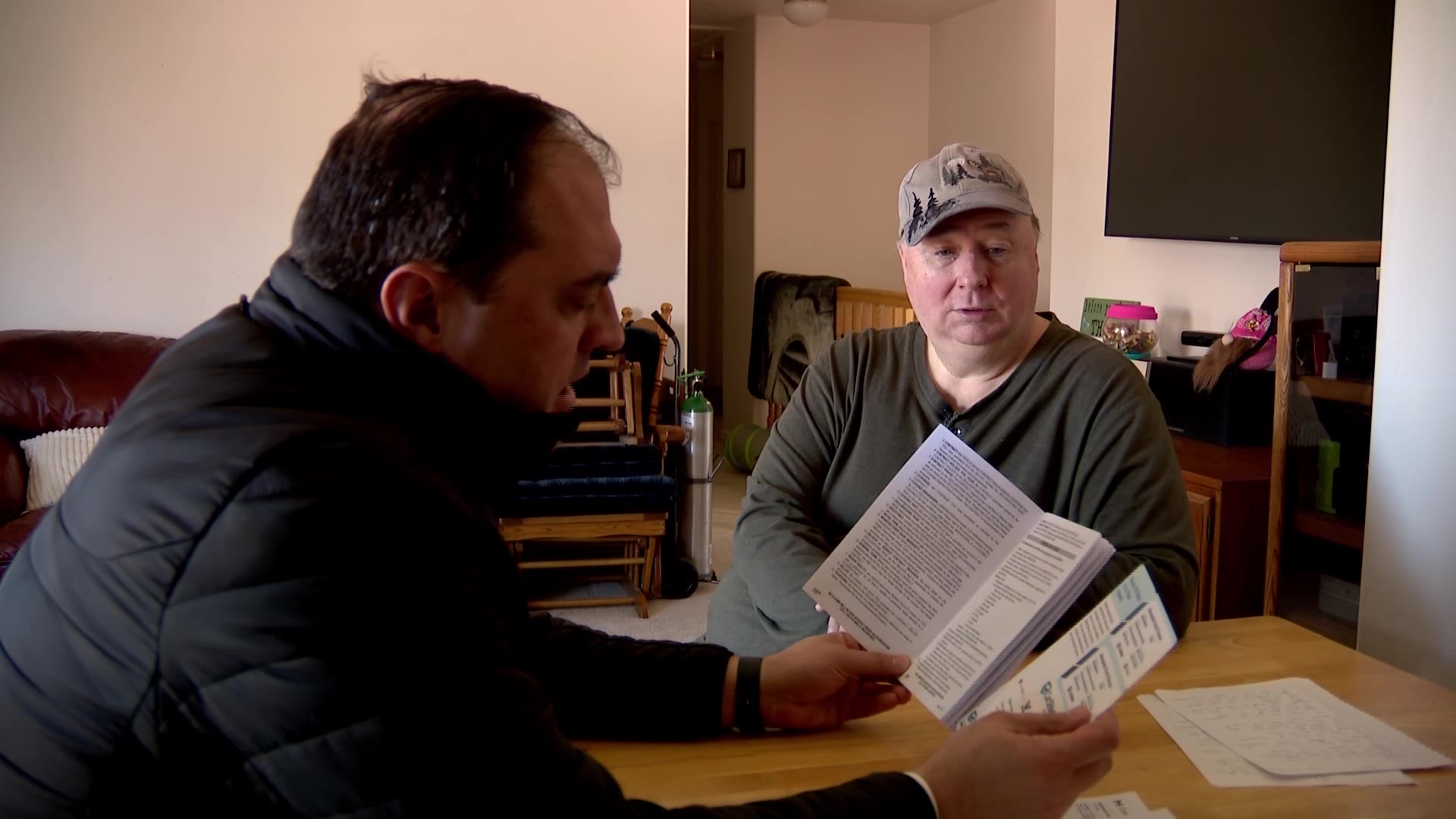Who pays when your valuable cargo gets damaged in shipment?
Sep 13, 2021, 11:00 PM | Updated: Jun 19, 2022, 10:02 pm
SALT LAKE CITY – When you hire a company to ship something valuable, you expect it to arrive in one piece. What rights do you have when a shipping company damages your package and how do you fight back?
That was the situation a Utah man faced when a piece of art he shipped across the country arrived beaten up.
A Meaningful Purchase
Bob Barr said he hadn’t planned on buying anything when he stumbled upon a painting in a gallery 30 years ago, but it spoke to him.
His dad, a Marine, flew World War II Navy planes just like the one painted – an F4U Corsair.
Barr bought it. Decades later, when his son graduated from the U.S. Naval Academy in Annapolis, Maryland, he knew just how to honor both generations.
“We were having my son, a graduate of the Academy, donate it in his grandfather’s name to the Academy,” he said.
Barr said he carefully packaged the artwork inside a wooden crate between layers of cardboard, bubble wrap with corner braces and brought it to a UPS Store near his home to be shipped to Annapolis. He made sure to tell the store workers that it was precious cargo.
“He then said, ‘Well, how much should we insure it for?’” he recounted.
The UPS store acknowledged the extra value, $6,000, and charged Barr $116 for their extra liability and off it went. But somewhere along the way, something went wrong.
A Damaged Donation
When the painting arrived, the wooden crate was gone. Instead, a folded cardboard box barely draped the painting. Worse, the frame was damaged, and the painting now had scratches and a few small holes.
Barr said he had also paid extra to have the recipient sign for the package when it arrived, but that didn’t happen. The artwork was left in a yard, propped up against a garage wall.
He had paid extra because of the value of the painting, so why is he now being forced to jump through hoops for months to get the shipping company to make him whole?
You ask, KSL investigates, tonight on KSL news at 10PM.
— Matt Gephardt KSL (@KslMatt) September 14, 2021
Barr said he reached out to UPS and was told by an inspector the damage was obvious.
“He says, ‘I’m not going to come inspect it. It’s a slam dunk.'”
But no slam dunk and no check.
Instead, Barr said he was told that before they would pay him a dime, he needed to provide proof of the painting’s value, such as a receipt from when he bought it 30 years ago.
That receipt was long gone – but should it matter? He paid extra for the $6,000 worth of liability and the store accepted it.
“I didn’t place the value so that I could a $6,000 check,” he said.
That price tag seems like it could be close: the artist’s paintings currently sell in that range at auction houses.
When Barr pointed that out to UPS, he said the company stopped responding.
“No check. No communication. No, ‘We’re not paying the claim,’ no denial, no, nothing,” Barr said.
Delivery Damage and the Law
The KSL Investigators contacted transportation attorney Stevan Baxter, who specialized in matters of shipping.
He said consumers tend to take for granted that their shipment will make it one piece.
“Ninety-five percent of the time, stuff gets from Point A to Point B without a problem,” Baxter said. “And so, I think a lot of consumers think, well, I’m going to play the odds and the odds will forever be in my favor.”
But when the shipping odds do turn on you, Baxter said the best way to protect yourself is to do what Barr did: make sure you communicate up front that what you are shipping is valuable. Either declare a higher value or purchase insurance, or both.
“If they didn’t have insurance and if they didn’t declare a higher value, then they bear that loss,” he explained.
But Baxter warns, in the eyes of the law, simply declaring an object has a high value and paying for that high value, doesn’t mean a shipping company will be forced to pay that high value if the package is lost or damaged.
“It’s really hard for people to understand sometimes – the law and courts really look at things based on what their value is to society, generally, not what the value is to the individual person,” he explained. “Oftentimes, that’s much less than the (value to a) person who is shipping things.”
The KSL Investigators reached out to UPS and the UPS Store on Barr’s behalf.
A spokesperson from the UPS Store wrote that while they didn’t “have insight into what happened in this specific case,” which led to the damage, they “sincerely apologize to Mr. Barr for the situation.”
Ultimately, they told us the same thing they told him months ago: Barr must provide “proof of the items’ value (e.g., sales receipt)” before the UPS Store will “be able to get the claim approved for reimbursement.”
Back in Communication
Some good news here for Barr. Since our calls, he said the silent treatment has stopped.
He is now working with UPS and the UPS Store through the cumbersome hoops of getting the painting appraised in the hopes it will ultimately lead to the shipping company covering the repair costs.













